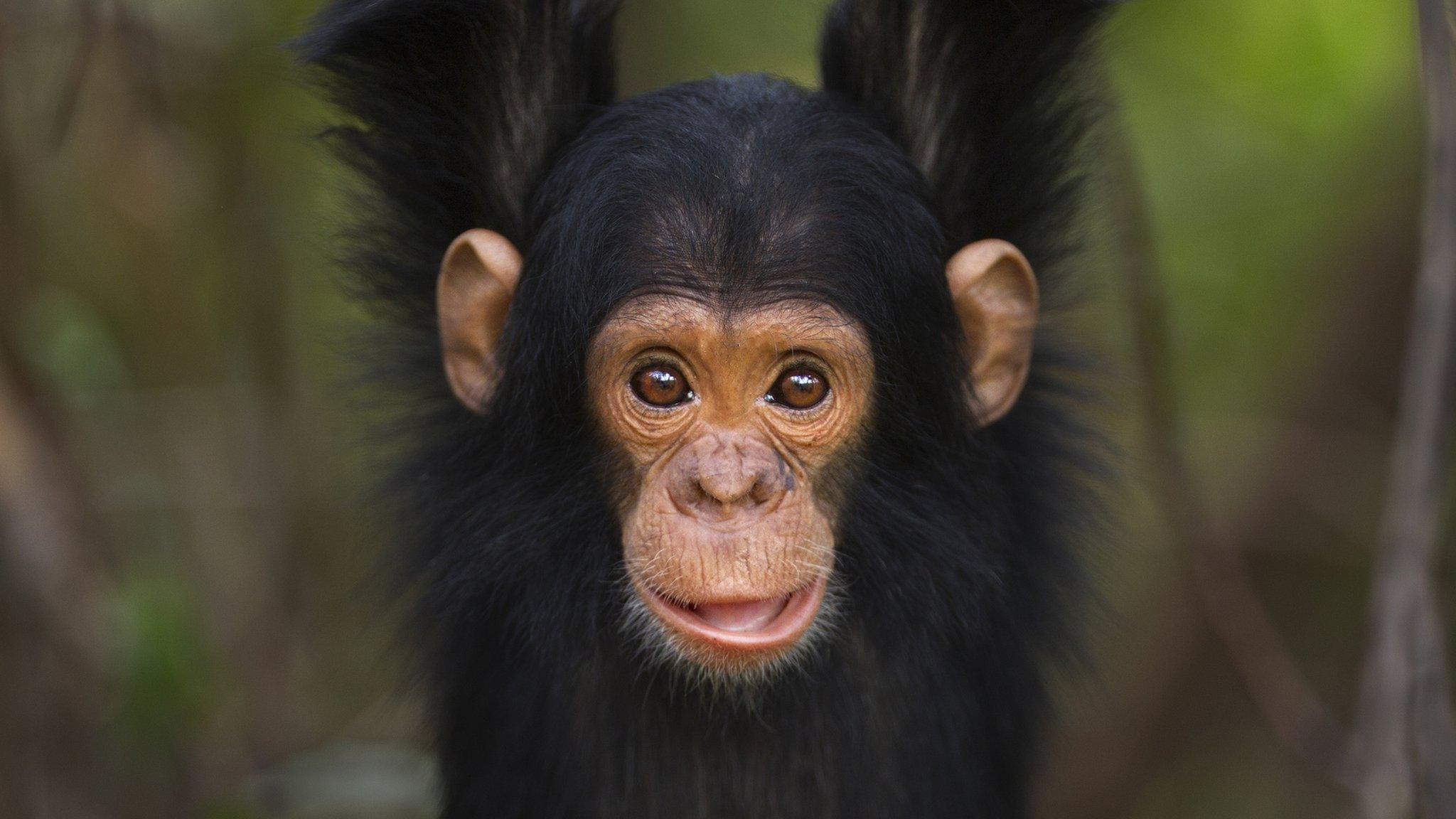Wildlife: Apes playfully tease and prank each other - just like humans do
- Published
- comments
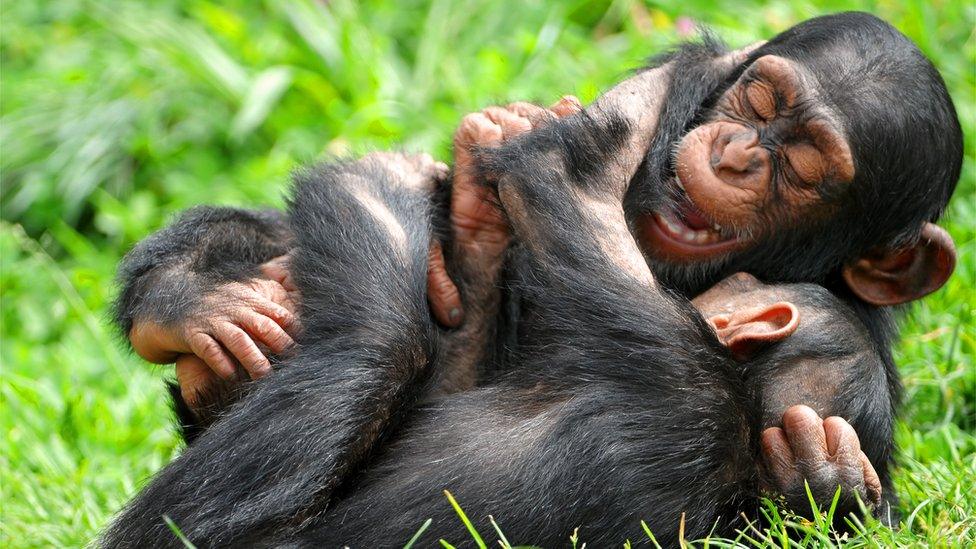
Great apes like to playfully tease, prank and play with each other just like humans do, scientists have found.
This includes hair-pulling, poking and body slamming other members of their group as well as waving objects repeatedly in front of their faces.
An international team of researchers made the discovery after they analysed videos of four species: Chimpanzees, bonobos, gorillas and orangutans.
The teasing was mainly one-sided, with the aim of provoking a response or get to attention of the others.
The researchers said that just like in humans, ape teasing was found to be persistent, with the animals not giving up until they got a reaction.
They said the findings, published in the journal Proceedings of the Royal Society B Biological Sciences, suggest playful teasing and joking may have evolved in human ancestors around 13 million years ago.
Researchers believe teasing behaviour can be seen in human babies as early as eight months of age and is often thought of as early lead up to joking.
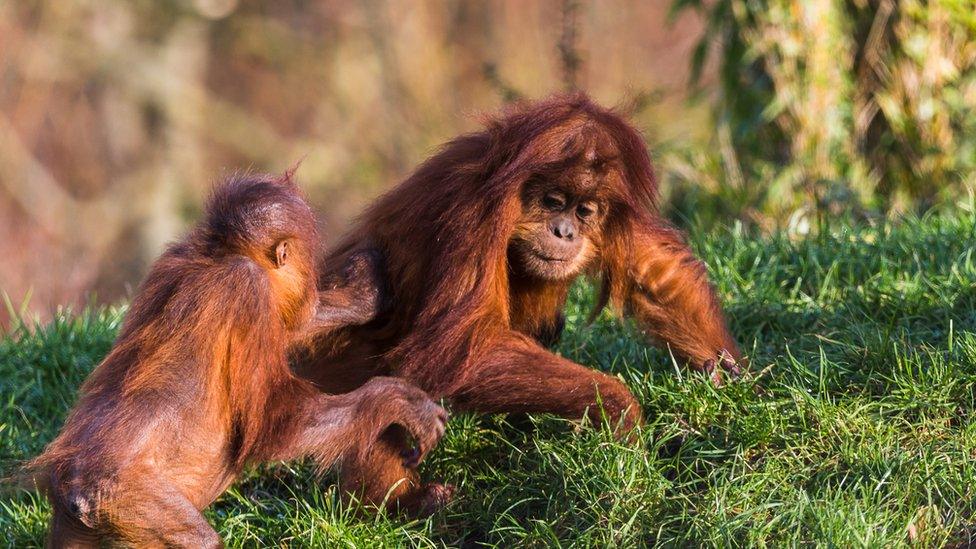
Four orangutans from San Diego Zoo in California in the US were part of the study
How was the study carried out?
For the study, the researchers analysed 75 hours of video footage involving nine bonobos, four orangutans, and four gorillas at San Diego Zoo in California in the US.
They also watched a group of 17 chimpanzees at Leipzig Zoo in Germany.
The team focused on young apes from each species - between the ages of three to five years old.
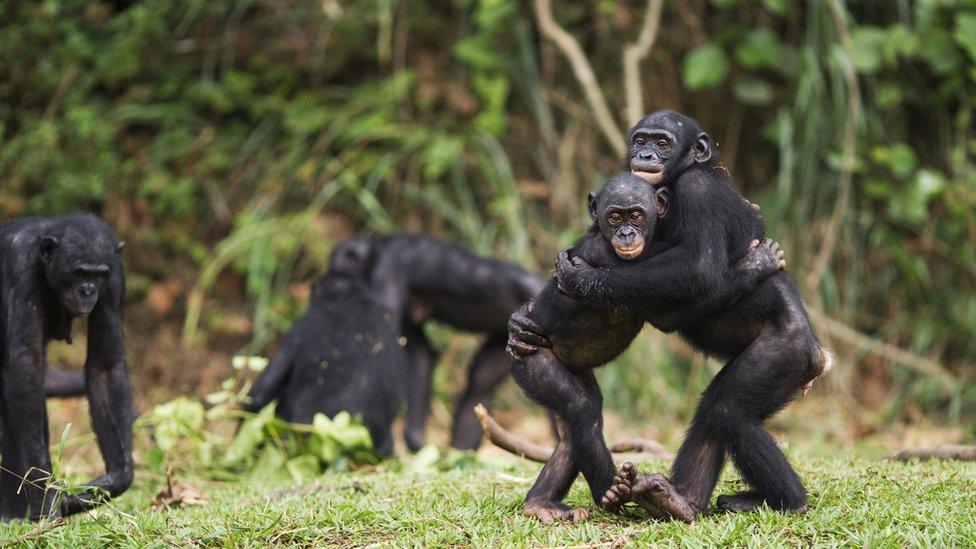
They might annoy each other at the time - but hopefully they can make up and be best of friends again after, like this pair of bonobos
Humans belong in this family group along with bonobos, chimpanzees, gorillas and orang-utans.
The great apes are the largest of the primates, and the males of each species are bigger than the female.
The researchers were able to see 284 times in which it seemed like the animals were teasing each other - of which 129 met the criteria for playful and provocative behaviour.
The team found 18 different teasing behaviours.
As well as body slamming, hair-pulling, hitting, and poking, other ways the animals were seen to try and get other animals' attention included tickling, stealing and getting in each other's personal space.
The teasing mainly occurred when apes were relaxed - another similarity with the behaviours in humans.
Why is this significant?
Professor Erica Cartmill, of UCLA, who is senior author of the study, said: "It was common for teasers to repeatedly wave or swing a body part or object in the middle of the target's field of vision, hit or poke them, stare closely at their face, disrupt their movements, pull on their hair or perform other behaviours that were extremely difficult for the target to ignore."
The researchers said their findings have implications "not only for primatologists and biological anthropologists, but for the study of emotion, humour, and pretence more broadly".
We hope that our study will inspire other researchers to study playful teasing in more species in order to better understand the evolution of this multi-faceted behaviour.
- Published16 August 2021
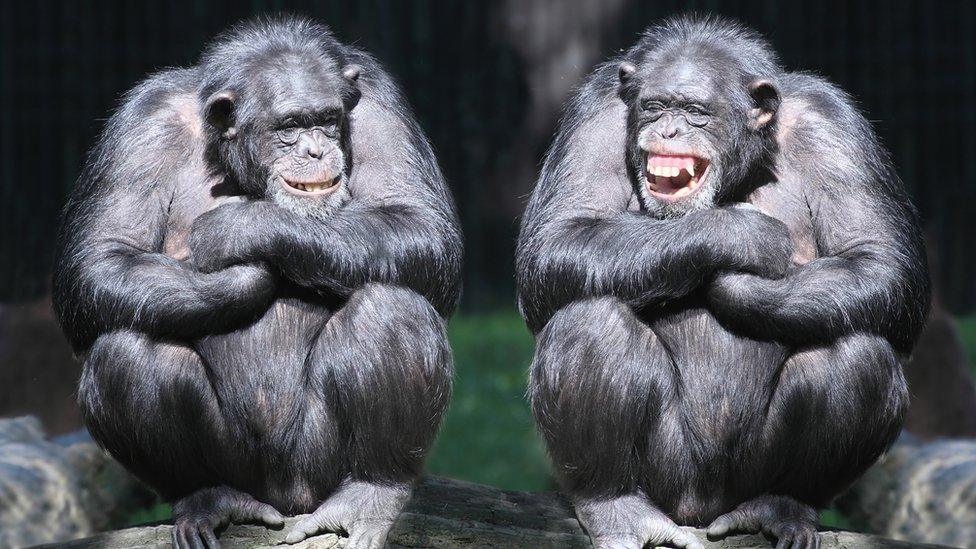
- Published17 March 2023
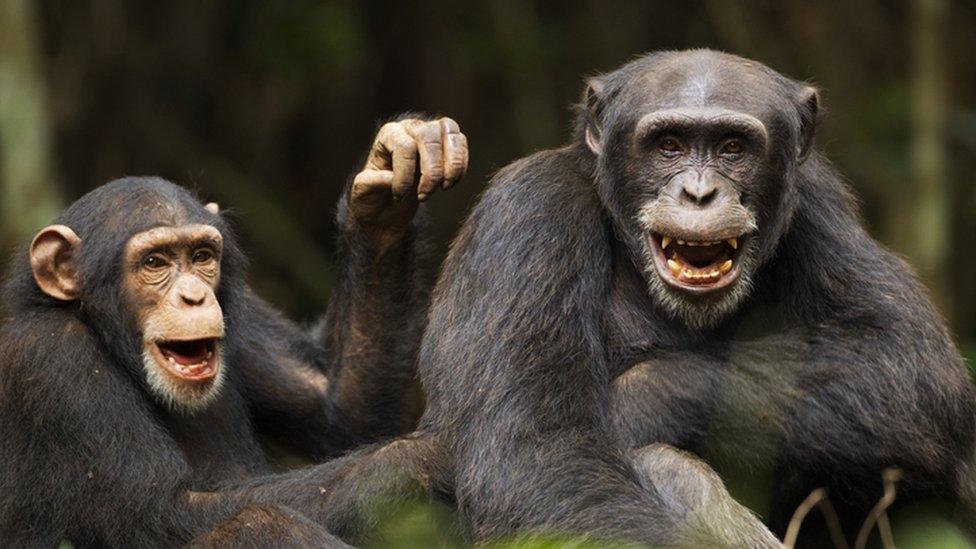
- Published8 September 2022
